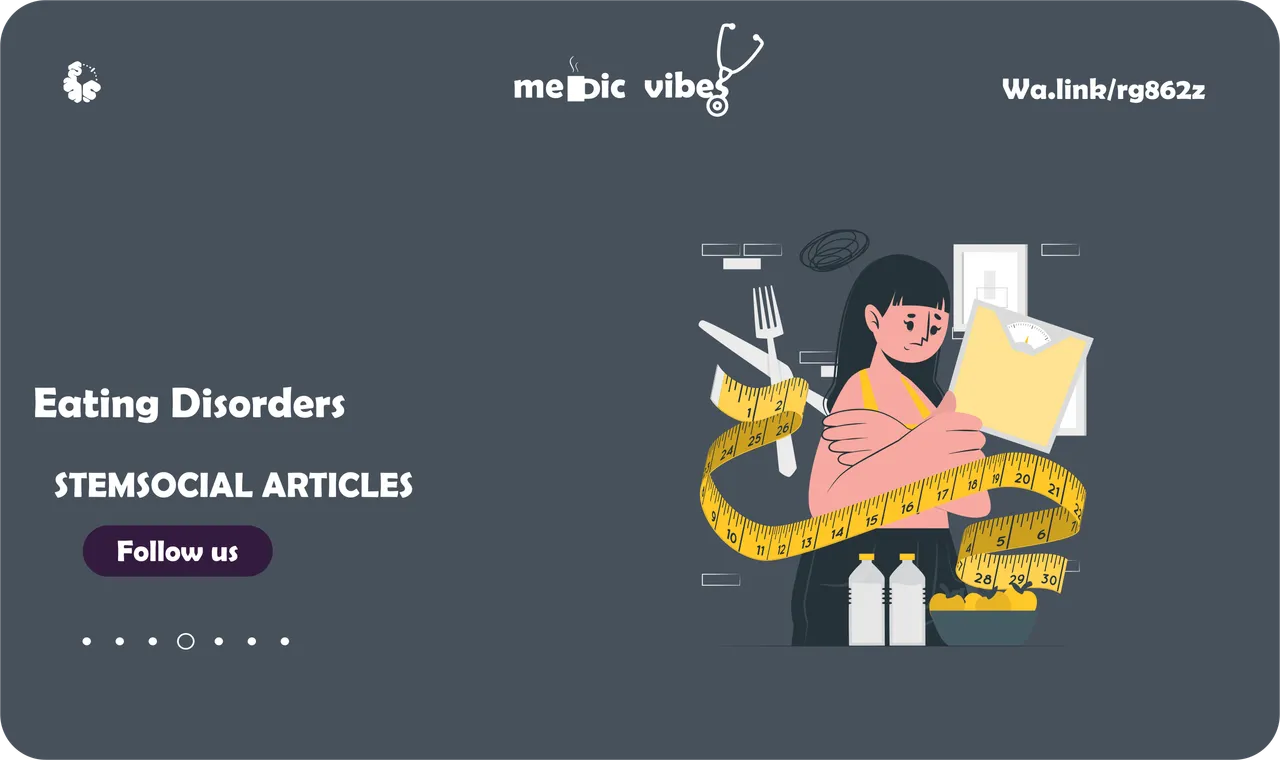Depression vector created by pch.vector - www.freepik.com
In the last post, we saw how:
- There are social and physiologic factors that can give rise to AN
- Using EAT-26 the there were 15% of people who had eating disorders in the study.
- Family therapy and pharmacology is not particularly helpful in AN

Welcome to Medic Vibes, where we discuss mental health disorders and make sense of them. Dr Ebingo Kigigha is a medical doctor (aspiring psychiatrist) and creative person (illustration and music). This has been our routine for four consecutive months. This month will be dedicated to Eating Disorders. In the first month, we discussed Depression, and in the subsequent month, anxiety. We just finished with Schizophrenia.
In this post, we are looking at research work done in Nigeria on Eating Disorders. To learn more just keep scrolling down. You can also skip to the key point of the post if you which or go to the conclusion to get the summary.

There is a fear of gaining weight that can be recognized in every patient with this disorder and this is part of the reason why they do not put effort into trying to get better or want therapy. This hatred for eating happens when no one is looking. The patient will refuse to eat with family nor will they eat in public.
Weight loss is facilitated by reducing the size, particularly with carbohydrates and food that have fat. The name Anorexia does not exactly give the best picture of the condition, in anorexia the patient begins to lose appetite in the late stages of the condition.
These patients still think about food but their thoughts about food are reflected in the fact that they can cook good meals for others. Some of these patients because of their inability to control their appetite will binge eat. When they binge eat this way they follow it up with vomiting. This activity is usually done at night.
These patients may also abuse medication to achieve their weight loss by taking drugs such as laxatives and diuretic medication. They may find themselves exercising in a very religious manner. They have a peculiar behaviour of hiding food around the house and carrying sugary food in their pockets.
When eating food they tend to take out some parts and store them in places where they can eat them later. They will dice the meat into tiny pieces and spend less time eating them and more time moving them around the plate.
They will deny that they are acting bizarrely or they will not continue with the conversation. Those shows have AN may have symptoms of OCD, depression and anxiety. These patients are known to be perfectionists and they tend to have pains, especially in their epigastric area.
They may be found to be compulsive with habits of sealing candy or medication. Sometimes they may steal clothes or other things they think they need.
Patients with anorexia nervosa usually do not function well sexually. Adolescence is not well-adjusted and adults do not have any interest in it.
Before they start becoming anorexic a small group have been found to have hypersexual behaviour and use substances but once they are affected by the condition they typically have no interest in sex.
As the patient continues to lose weight clinical features of reduced body temperature, oedema, reduced heart rate reduced blood pressure and the presence of lanugo hair start to grow.
Different physiologic changes take place in patients with this disorder. Females, start to have amenorrhoea. This halt in the menstrual cycle usually starts before they start losing weight. In others because of the vomiting, they begin to have hypokalemic features.

Eating Disorders in Nigeria (Limitations of the study and the conclusion)

People illustrations by Storyset
The study achieved so much for the world of psychiatry in the tropics and has helped gather the broad scope of what ED looks like in Africa. One of the major problems the study faced was the type of assessment that was used. It would have been a preferable result if it used more diagnostic tests rather than EATS-26.
Notwithstanding EAT-26 is a better assessment than the older version had 40 items. It can assess parameters in psychology. With this, it can be said that the study was able fond an at-risk population to ED.

Treatment
Guidelines for anorexia nervous Hospitalization in Adolescence
The diagnosis of AN is usually made by family medicine doctors. The methods used in these admissions have been available for some time but different doctors will show different forms of practice.
This was confirmed by a study that was done in Canada and America that showed that those who cared for those with AN noticed different forms of practice among the doctors as regards admission. Most times the physicians were noted not to use criteria but their experience over time in making this diagnosis.
There is some complication that can make a need for admission. These are extreme weight loss, reduced temperature, reduced heart rate, reduced blood pressure and changes in blood pressure and pulse with a change in position.
The patient's weight is taken into consideration and is compared to the ideal weight for age height and sex. A survival don in North America saw that 52% of doctors agreed that when the body weight of the patient is less than 75% of the normal body weight then the patient should be admitted.
When the patient is less than the ideal in this way there is a higher risk that they may die.
The guide for practice emphasises that a temperature less than 35.5°C needs to be admitted into the hospital if they are an adolescent.
There is a reduced heart rate in close to 80% of patients with AN and this is what might lead to the death of the patient. The guidelines suggest that an adolescent with a heart beat less than 50 beats per minute during the day and 45 beats per minute at night should be admitted. This has been confirmed from various studies done in America and Canada 70% of patients between the age of 11 and 20 had heart rates less they 50 beats per minute
When a patient had reduced blood pressure and changes in pulse and blood pressure with changes from sitting and standing the patient needs to be admitted. The American Academy of paediatrics and Royal colleges in Australia and New Zealand both recommend ambition when the systolic blood pressure is less than 90 mm Hg. A change in pulse rate of 20 beats per minute on sitting and standing is also seen as a cause for admission similarly more than 10 mm Hg change is seen as an indication
Anaemia, neutropenia, dehydration, and electrolyte abnormalities stop the growth of the adolescent, who refusal of food in addition to worrying about friends and family. Mental illness also is taken as an important consideration for admission to AN.
These features should be paid close attention to when making the deception for admission.
Questions
- What did you learn about Eating Diorders?
Conclusion
- A very important feature of AN is the fear of gaining weight
- Part of the limitations of this study was the fact that they used EAT-26 to assess the subjects
- When considering admission there are some features that should be paid close attention to such as temperature, heart rate and blood pressure.

References
- Kaplan-Sadocks-Comprehensive-Textbook-Psychiatry
- Page demarcations made with Inkscape.org
- Healthline
- WebMD

